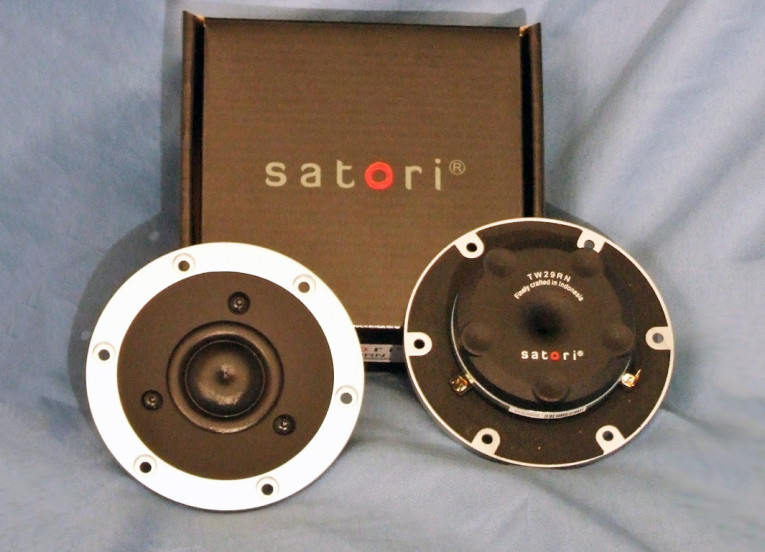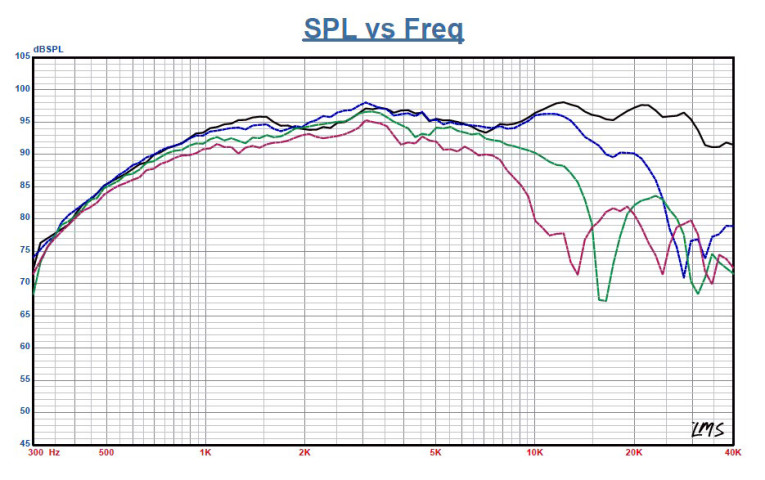


This month, SB Acoustics sent its new high-end Satori line neodymium 29-mm ring dome, the TW29RN. Features include a 29-mm wide surround coated cloth ring-type diaphragm, a non-reflective cast-aluminum rear cavity, a two-part aluminum faceplate with integrated mechanical decoupling, dual balanced compression chambers, high saturation neodymium ring type motor magnet with a T-shaped pole and dual copper shorting rings (Faraday shields), a copper-clad aluminium wire (CCAW) wound voice coil, a foam mounting gasket, and gold-plated terminals.
Unlike the ring domes from Vifa and Scan-Speak, the SB Satori version does not use an external phase plug. It simply has an indent where the center of the dome is attached to an interior post. Part of the reason for this is that the only thing that was patented on the first Vifa XT ring dome was the phase plug. However, I don’t think this patent was ever too rigorously enforced as I have seen several China-made versions.
I began testing using the LinearX LMS analyzer to produce the 300-point impedance sweep shown in Figure 1. The magnetic fluid damped resonance occurs at a moderately low 570 Hz. With a 3.03 Ω DCR, the minimum impedance for this tweeter is 3.28 Ω at 3.6 kHz. Following the impedance test, I recess mounted the TW29RN in an enclosure that had a baffle area of 17” × 8” and measured the on- and off-axis frequency response with a 100-point gated sine wave sweep at 2.83 V/1 m. Figure 2 shows the on-axis response to be a very flat ±2.3 dB from 1.5 kHz to 30 kHz, with the SPL extending out to 40 kHz. Figure 3 depicts the TW29RN’s on- and off-axis response. Figure 4 shows the off-axis curves normalized to the on-axis response. Figure 5 shows the two-sample SPL comparison, indicating the two samples were closely matched, with a small 1 dB variation between 2.2 kHz to 3.8 kHz.



Next, I used the Listen SoundCheck analyzer along with the Listen SCM 0.25” microphone (provided courtesy of Listen, Inc.) to measure the impulse response with the tweeter recess mounted on the test baffle. Importing this data into the Listen SoundMap software produced the cumulative spectral decay plot (usually referred to as a “waterfall” plot) shown in Figure 6. Figure 7 shows a STFT displayed as a surface plot. For the final test procedure, I set the 1 m SPL to 94 dB (2.3 V) using a noise stimulus, and measured the secondnd and third harmonic distortion at 10 cm (see Figure 8).
Since I know that Frank and Ulrik (Danesian Audio) spend a lot of time listening to various iterations of a driver as they go through the development process, I’m guessing this is a very fine sounding product. For more information on the Satori TW29RN and other SB Acoustics drivers, visit www.sbacoustics.com.



This article was originally published in Voice Coil, February 2016.



